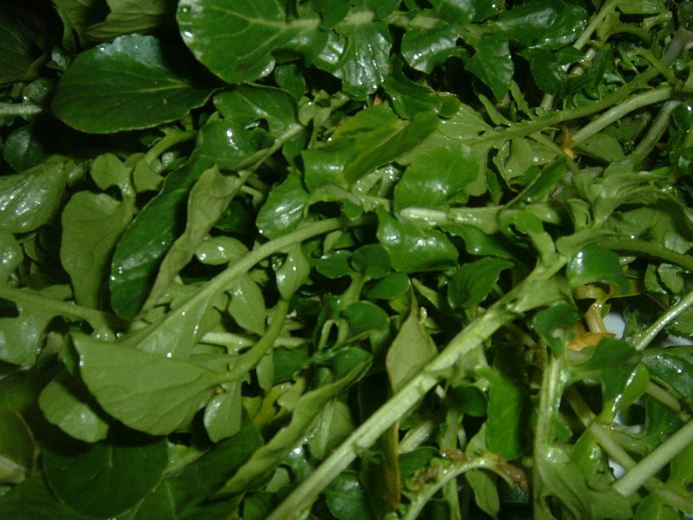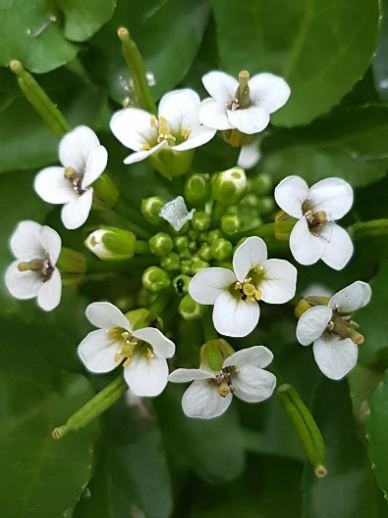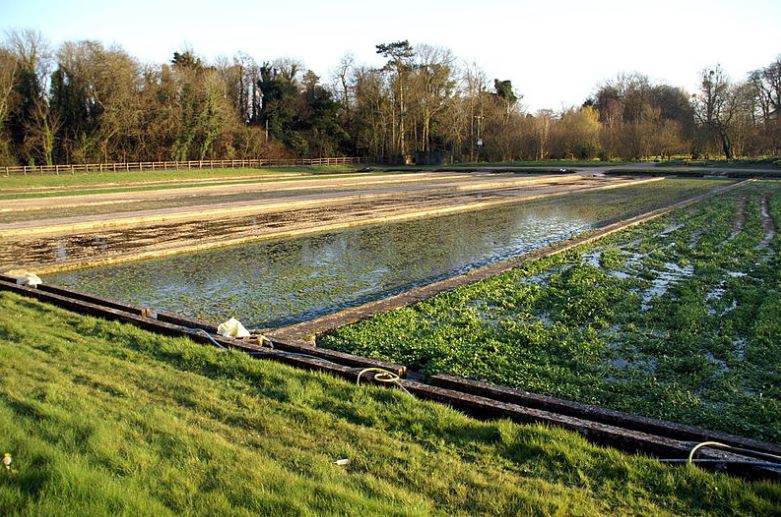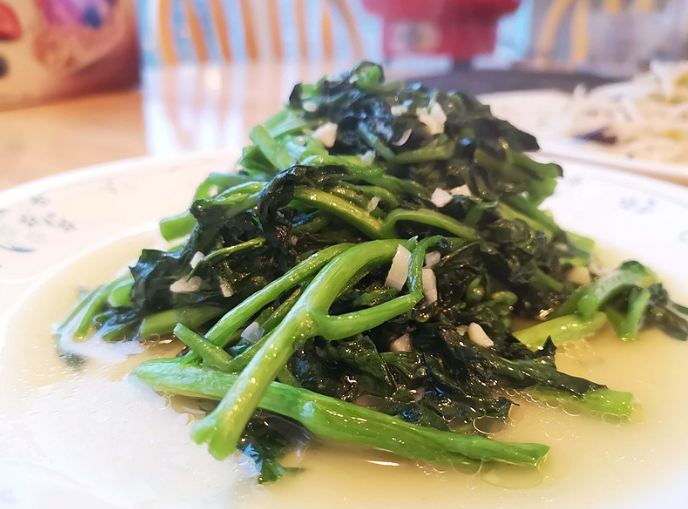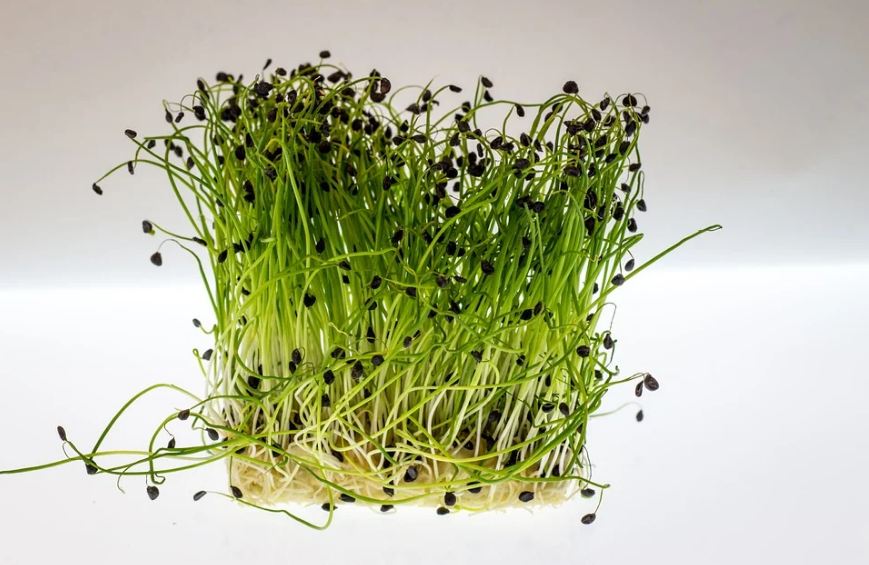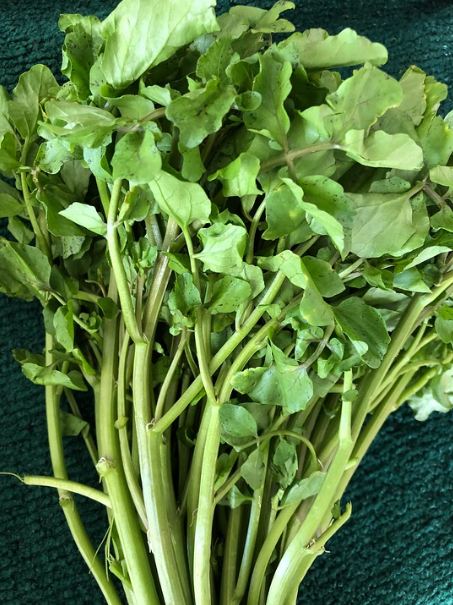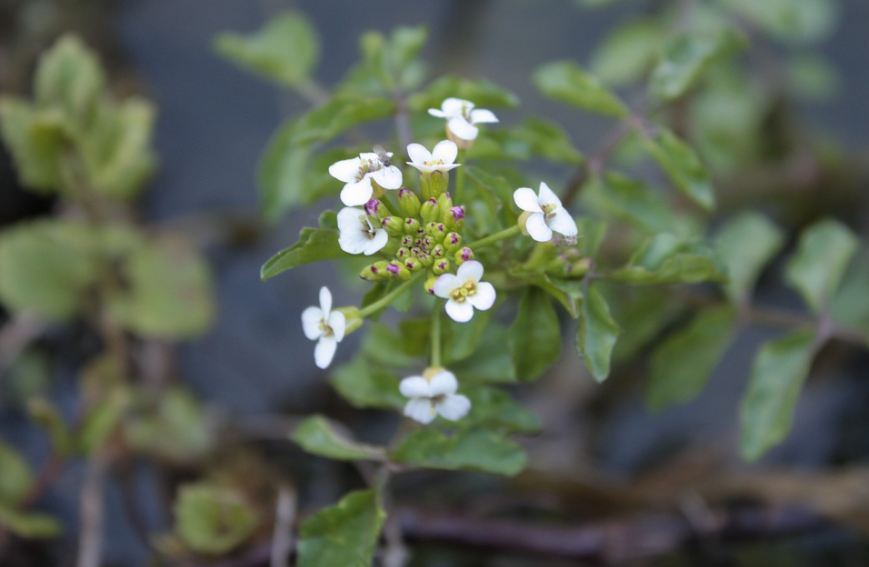Watercress is a leafy green plant that usually grows in the water of natural springs. It belongs to the family of cruciferous plants, including arugula, kale, Brussels sprouts, and broccoli. This water vegetable is one of the ancient greens which might have also been a part of the Roman soldiers’ diet. It was not just a garnish if seen historically but was considered a superfood.
Watercress is also known as the Yellowcress or by its botanical name Nasturtium Officinale. It is an aquatic flowering plant. The plant is native to Asia and Europe and grows very rapidly.
Structural Description
These plants grow in the form of bushy colonies, and they root through their stems freely. The flowers of watercress grow in the form of clusters of tiny white flowers with four petals each. The leaves of watercress grow alternately and are pinnately compound in structure, and usually bear three to nine leaflets at once. The seedpod of watercress is called a “silique,” and each silique bears only two rows of seed. The stems of watercress are hollow that makes them float over water. And the flower clusters of watercress are visited by insects like hoverflies frequently.
Distribution
Because of the rapid growth and widely adaptable nature of watercress, it is considered a weed in several regions of the world. While in some other regions, it is regarded as an aquatic vegetable or water vegetable. This plant widely grows in several locations all around the world.
In 1808, William Bradbery, a horticulturist, introduced this aquatic vegetable in the United Kingdom and cultivated it commercially. In the United Kingdom, Watercress was first grown alongside the Ebbsfleet River in Kent. But, today, watercress is grown in several counties of the UK. The counties which are the most notable for the growth of watercress include Hertfordshire, Hampshire, Wiltshire, and Dorset.
Alresford, a town near Winchester, holds a Watercress Festival annually. Around 15,000 visitors come to this festival, and there is also a preserved steam railway line named after this local crop. In the 1940s, Huntsville and Alabama of the United States were locally known as “Watercress capitals of the world.”
Culinary/Edible Uses
Along with being edible, watercress also carries a lot of minerals and vitamins. Its flavor is mildly hot mustard-like. It is used as a food in several ways, for example:
- Salads and sandwiches
- It is cooked as a potherb
- Smoothies and soups
- Used to flavor dressings and sauces
- The seeds of watercress are ground to a powder to be used as a mustard
Health Benefits
Watercress is considered a superfood due to the health benefits that can be attained by eating it. This water vegetable only consists of 4 calories per 34 grams. Moreover, watercress is a nutrient-dense food. Watercress is also ranked as number one in the list of Powerhouse Fruits and Vegetables by the US Centers for Disease Control.
Watercress has high amounts of antioxidants (components inhibiting oxidation). In humans, oxidative stress is usually associated with chronic diseases, such as diabetes, cardiovascular diseases, and cancer. And watercress being highly packed with antioxidants can help avoid and protect from oxidative stress and lower the risk of such chronic illnesses. Moreover, watercress may also help lower cholesterol levels.
Cultivation
Watercress can grow well in partially submerged, flooded, or running water areas with a moderately cool climate. This plant can also grow in soil that is consistently wet with a pH range of 6.5-7.5.
The natural condition for the growth of watercress plants can also be mimicked by growing the plant in some bucket or any other container.
Growing Watercress Plants
This plant thrives in water or wet conditions, and it can be grown in different ways like transplants, cuttings, or seeds. The plant can also be grown in fish ponds, garden beds, or indoor pots.
1. Growing Watercress in Water
The easiest method of growing watercress is growing them in water. This method doesn’t need any soil. For growing watercress in water, follow these steps:
- Get a bunch of organic watercress from any supermarket, make sure that the bunch you purchase has several intact roots.
- Place some rocks at the bottom of a pot and fill it with water. Now, place the bunch of the watercress you purchased.
- All you need to do for its maintenance is changing the water every week.
2. Growing Watercress from Seeds
Growing watercress from seeds is a much complex method. For this, you will need to follow these steps:
- First, choose a pot or vessel for growing watercress, make sure that whatever the pot you choose consists of drainage holes in it.
- Now, fill your vessel/pot with rich potting soil (pH of 6.5-7.5).
- Sow the watercress seeds about 1 cm deepin the soil and around 10 cm apart.
- Lastly, place this pot in a bigger pot and fill this bigger pot with water.
- Make sure that the outer pot is filled with water at all times.
3. Harvesting
It only takes around 15 to 20 days for the Watercress plant to grow from seed to a grown plant, and when it’s the time of harvesting, you can do it right away and get more after 2 to 3 days. It is believed that the young leaves of watercress have more taste and spice.
Caring for Watercress
While growing a Watercress plant, a number of factors must be taken care of for better growth of the plant. Some of the important factors for the care of watercress are as following:
- Make sure the moisture level is consistent.
- Use soluble fertilizers for cultivated cress if needed.
- Ensure the surroundings of the watercress plant in your garden are completely weed-free.
- Keep your plant away from pests, like whiteflies, lady beetles, snails, and spider mites.
- Grow companion plants with your watercress plant; the best companion plants for watercress are wintergreen, chives, and peppermint.
Conclusion
This fast-growing plant can be a part of your kitchen, garden, or backyard. You can grow it easily and start using it in your daily diet. The plant will bring taste along with health benefits to your life. So, why don’t you rush to the supermarket near you and get yourself a bunch of watercress or its seeds and reap its amazing benefits?

